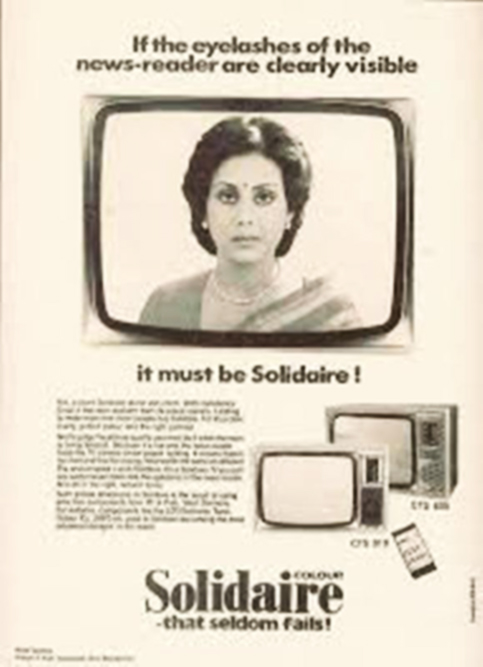Registered with the Registrar of Newspapers for India under R.N.I 53640/91
Vol. XXXIII No. 9, August 16-31, 2023
The story of Solidaire
Business Houses of the South by Sushila Ravindranath
Solidaire TV was one of the Chennai success stories of the 90’s. From setting up small scale units, the founder A N. Srinivasa Rao, took the plunge to manufacture televisions. The government had just opened up the market. The other entrant from Chennai was Dyanora. This story is about Solidaire, which Rao launched with great enthusiasm.
He had first set up Hi Beam Electronics, a small-scale unit to manufacture electrical equipment. As he was one of the pioneers to anticipate a boom in TV demand, he acquired a license to manufacture 7,000 TVs in 1974. This was a time when 7,000 was considered a reasonable number. He and two other small units got together to set up Tristar Electronics. There were a lot of starting troubles. The launch of Madras Kendra of Doordarshan got delayed. Which meant demand would be low. After a loss of Rs 14 lakh, the partners broke up.
Rao’s Hi Beam started manufacturing ‘Pria’ TVs in 1978, whose name was subsequently changed to Solidaire. It was the right time to enter the TV market, as more Kendras became operational in the South. The Asiad and the entry of colour TVs led to increased demand. The company started doing well with annual production soaring to 32,000 sets. Solidaire had a turnover of Rs 8 crore. Rao’s sons Ramanaprasad and Ravi Prakash were inducted into the business.
In those days when scale was not thought of many small-scale entrepreneurs jumped into TV manufacturing and quickly fell by the wayside. Solidaire and the other Chennai based company Dyaonara survived and were healthy competitors. They did very well during the 80’s.
 Gitanjali Aiyar in the print advertisement for the brand Solidaire.
Gitanjali Aiyar in the print advertisement for the brand Solidaire.Solidaire stayed ahead through various strategies. It frequently changed models, launching nine of them in four years. It tried to keep abreast with the latest technology. It introduced a picture in picture model which was very popular then. It paid attention to after sales service. It was also planning to make VCRs.
The company went in for a successful public issue The promoters held 60 per cent of the equity. The family was wary of diluting their holdings further. Although they knew a foreign collaboration was necessary in this business they chose not to do so. Solidaire relied on its strength in product development. This was to be an error of judgement.
The company also went for expansion, setting up service facilities even in smaller towns. It was able to gain 30 per cent market share in the South and 5 per cent in the national market. As mentioned earlier, Solidaire was hoping to enter the VCR market. For this it needed foreign technology and was looking out for a Japanese collaborator. This was a time when the industry thought VCRs would boost colour TV sales.
Unbelievable though it sounds today, it was difficult to get a license for VCR manufacture. Again it sounds unbelievable that the company decided to assemble VCRs in one of its small scale units, using its brand name. This was still the license raj and Solidaire got a licence and so did competitors like Dyanora. The company was planning to manufacture electronic tuners which would be part of the VCR plant. It was expected to be an import substitution project. Others like BPL-Sanyo and Crown NEC were also in the fray.
Solidare was also seriously thinking of going in for the manufacture of audio products like two-in-ones. Does anybody remember them? There were also plans to make domestic appliances, mixers, rice cookers and washing machines. The company was on the verge of signing a collaboration agreement.
Although there were murmurs about liberalisation, many did not take it seriously. In an interview to a magazine at the end of 1989, Rao talked about expanding, hiring professionals. and diversifying. “If all goes well, Solidaire will emerge as a company with a wider product range within the next three years.”
In the next two years, India opened up and that was the end of companies like Solidaire.


Comments